Goodman’s Mouse Lemur
Mycrocebus lehilahytsara
Near Threatened

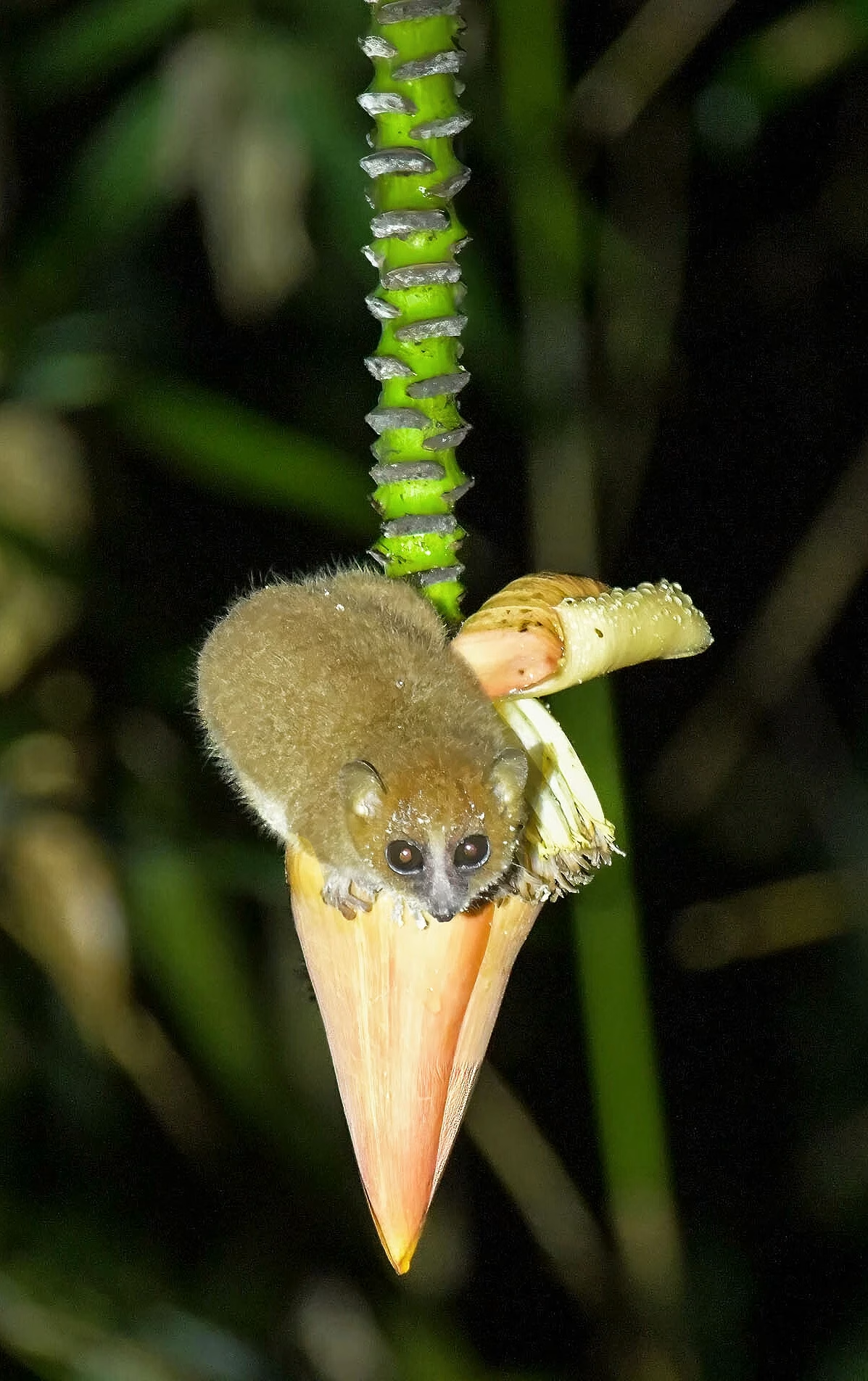
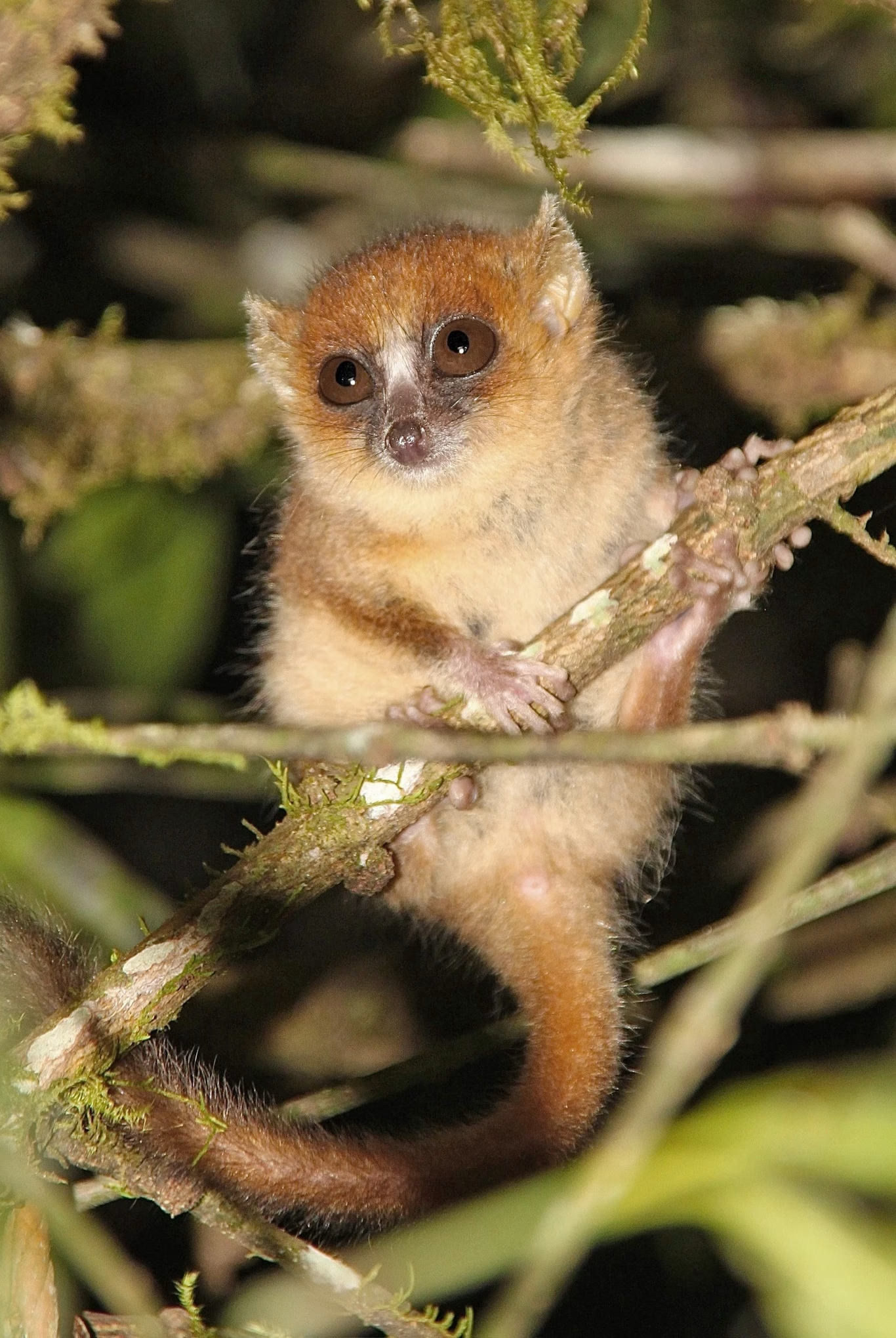
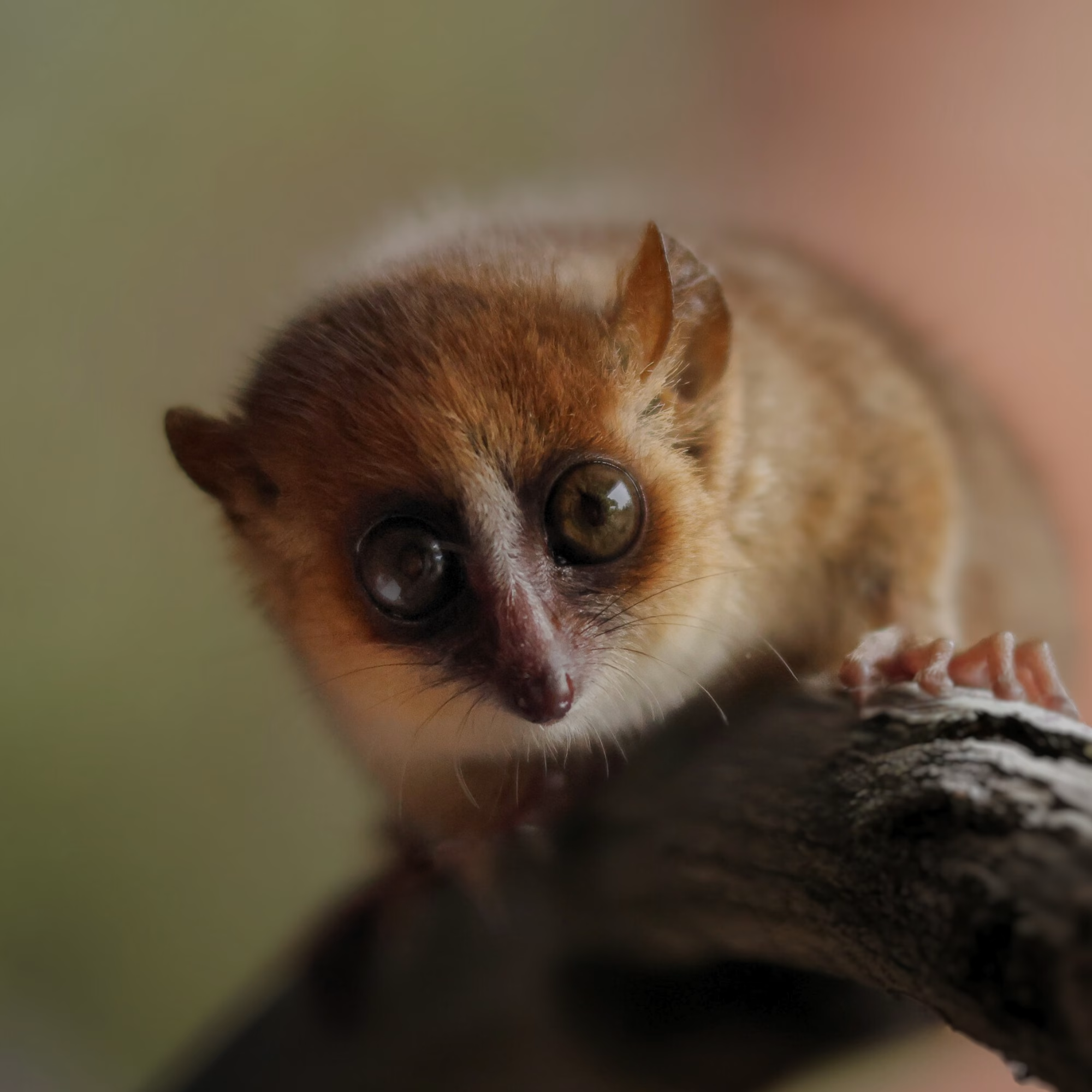
STATUS
Near Threatened
SIZE
Length: 3.5 to 3.6 in (90 to 92 mm)
Weight: 1.6 to 1.7 oz (45 to 48 g)
HABITAT
Rainforest
DIET
Omnivore
LIFESTYLE
Nocturnal
Arboreal
Solitary
THREATS
Habitat Loss
Hunting

INTERESTING FACTS
Most female and some male Goodman’s mouse lemurs use torpor while sleeping to conserve energy throughout the resource-scarce winter months.
These lemurs have a lot of strength in their back legs for such a little animal. They can spring from branch to branch in seconds, and leap up to 10 feet!
Goodman’s mouse lemurs rarely, if ever, go down to the forest floor. Their lives are spent in the trees.
Characteristics
Only a few inches long, these little lemurs are nocturnal and almost exclusively arboreal, spending their time nimbly moving through the branches in the forest understory. They are well adapted to the night life, with large eyes to take in as much light as possible and protruding, flexible ears to capture sounds of potential prey or predators. They use their long limbs to leap from tree to tree, their long tail to balance, and specialized toes to securely grip branches. They are fast and impressive jumpers—they’ve been shown to bound up to 10 feet and accelerate to 4 miles per hour in less than a second! One unusual characteristic of these lemurs is that they can store fat in their tail, which can be used for energy when little food is available.
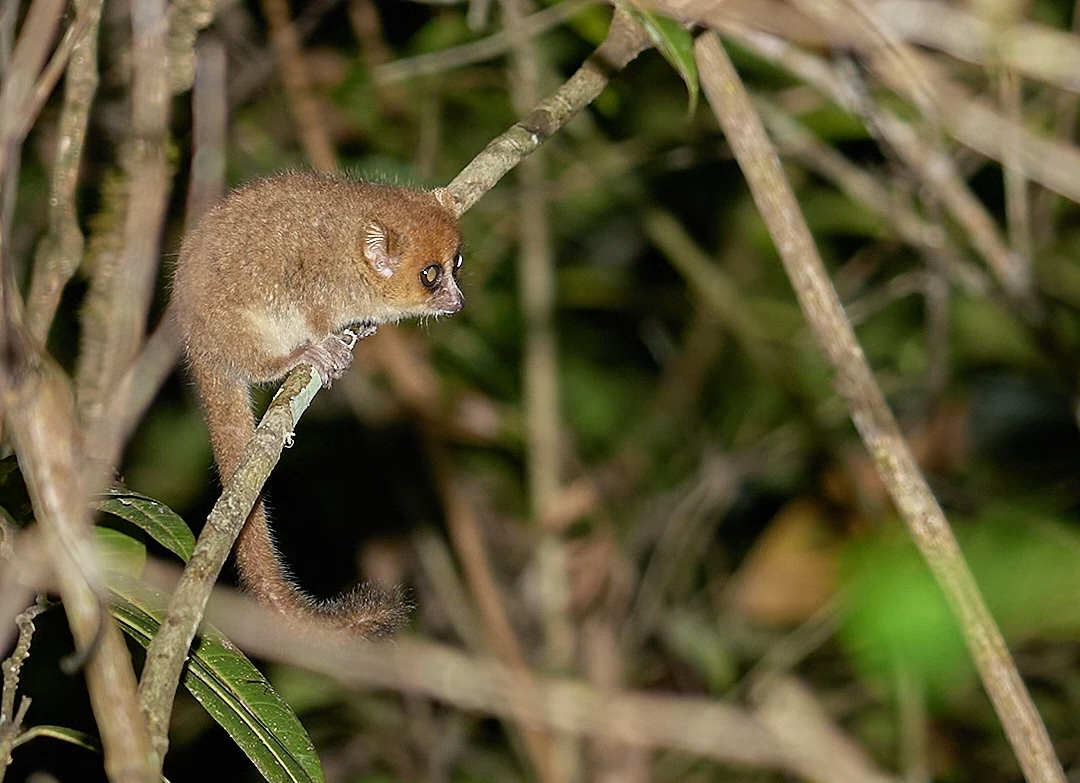
Foods and Feeding
The Goodman’s mouse lemur is an omnivore, with a diet that consists of insects, small vertebrates, fruits, flowers, nectar, gum, and leaves. These lemurs serve as pest controllers through their consumption of insects, and they aid in the regeneration of their forest habitat by dispersing seeds through their feces. They even play a role in pollination, collect pollen from flowers while drinking nectar and then depositing the pollen on each flower they visit.
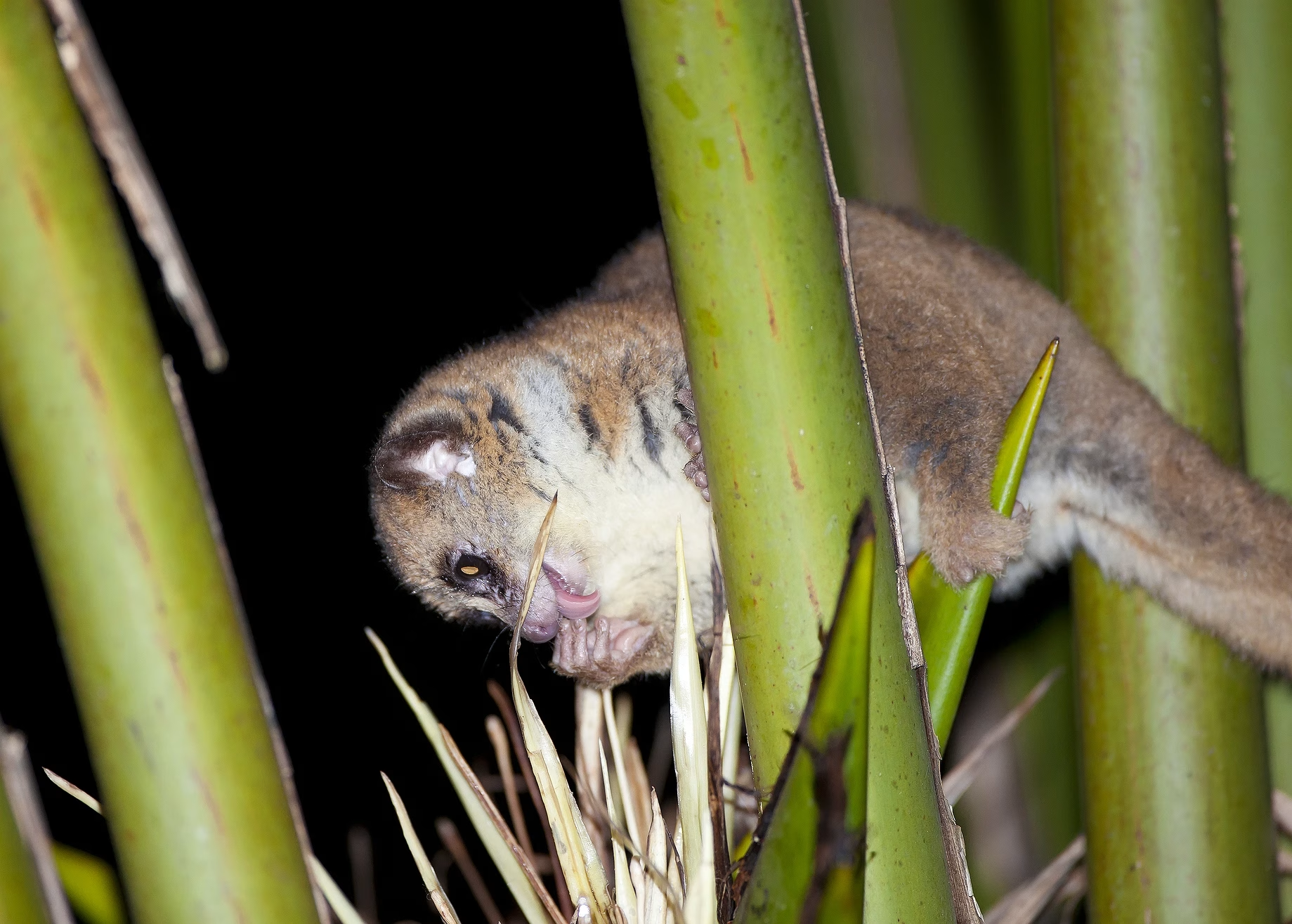
Behavior
Nights are spent searching for food and occasionally engaging in social behaviors, such as grooming and mating. From dawn to dusk, these lemurs sleep in tree hollows, a cozy way to protect them from predators, such as snakes, owls, and fosas. They may even share a hollow with two to five other lemurs, even though they tend to be solitary at other times.
One of the most interesting behaviors of this species is that it actually enters a state of torpor when sleeping during the day. Its metabolic rate and body temperature are significantly reduced, a way of conserving energy. This survival strategy is also used during times of food scarcity, and female Goodman’s mouse lemurs in particular are known to enter torpor throughout the winter months. This is when that fat-storing tail especially comes in handy.
Male Goodman’s mouse lemurs occupy larger home ranges, up to four times larger than those of females, and they mark their territories using urine and scent glands. There is a subtle social order within most species of mouse lemurs, with females often having dominance over males, and that may be true for Goodman’s mouse lemurs as well.

Reproduction and Life Cycle
Female Goodman’s mouse lemurs may reproduce from two to four times per year, with gestation lasting two to three months. They typically give birth to one to three pups, which are born with closed eyes and weighing only a few grams. The pups are highly dependent on their mother for food and protection, they cling to her fur as she moves in the trees. For the first few weeks, the pups remain in their mother’s nest, receiving a constant supply of milk and grooming sessions. As they grow older, the pups become more active and curious about their surroundings and start exploring.
At two to three months of age, pups gain more independence and start venturing out on their own, but they still rely on their mother for guidance and protection. Shen will continue to nurse and care for her young until the pups are fully weaned at four to five months. She continues to watch over them and teach survival skills like establishing territory, foraging for food, and identifying potential threats. The pups reach sexual maturity and full independence at one year of age, when they head off to establish territories of their own.

Conservation and Threats
This species is listed as Near Threatened, largely due to habitat loss and hunting by humans. Conservation actions needed include enforcement of land management, curtailing hunting, and education to facilitate local awareness of the Goodman’s mouse lemur and its role in the local ecosystem. Additional research is also needed to better understand the current population size, distribution, and threats, in order to establish conservation programs and strategies for these little lemurs.
